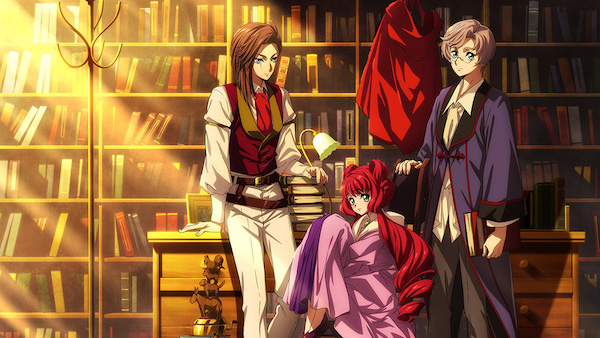Television Review: “The Grimm Variations” — Intriguing But Vague
By Sarah Osman
So another season would be in order for The Grimm Variations — if it would strive to be less chaotic.

A scene from Netflix’s The Grimm Variations.
Fairy tales have never stopped being told and retold. The original Grimms’s Fairy Tales — gathered from European folklore by Jacob and Wilhelm Grimm — have been adapted, readapted, and then adapted again. Most of these versions don’t reflect the grizzliness of the original tales, but some do. And some artists, taking advantage of relaxed standards, have taken these fairy tales into even grizzlier directions.
Enter The Grimm Variations, Netflix’s latest anime. Drawing on six different stories, the series definitely believes in playing around with the original material, consistently moving it into different genres, periods, and landscapes. There is also an emphasis on the grim parts of Grimm — forget about the arrival of happy endings or friendly, singing animals. The result turns out to be uneven. On the one hand, The Grimm Variations offers far more intriguing tinkering than other modern adaptations (thankfully the series doesn’t rely on the “what if we made this place really, really gritty trope”). The problem is that these retellings can be bewildering; there isn’t sufficient interest in clarity, either in terms of theme and character motives.
Take the first episode, which rejiggers the world’s most well-known fairy tale: “Cinderella”. The proceedings being in what appears to be early 1900s Japan, and that is a welcome change from the vague European villages we’ve seen again and again. Cinderella, now named Kiyoko, has a kind father and a not-so-evil stepmother. In fact, her stepmother is almost princess-like, but her two daughters aren’t — they wallow in their “commoner” status, which means they are not always well-behaved ladies. Then the episode takes a weird twist: Kiyoko is not as innocent as she seems. That kicks the plot into horror film territory, framing the two sisters as the victims. At times, the doings are chilling — Kiyoko is terrifying — but I was left scratching my head about this ‘Cinderella”s transformation to the dark side. And what is Kiyoko’s mysterious doll all about? Change for the sake of head-shaking change easily becomes self-indulgent.
And that was one of the more straightforward reinterpretations. The next episode took Little Red Riding Hood and put it in a dystopian future, where a “wolf” (i.e. human man) takes out his anger on unsuspecting women. This installment is by far the most violent in the series and while the mayhem did not bother me, the shift into Hard Candy territory did. We’ve seen superior versions of the “seemingly innocent women takes out monsters’ idea before. Nothing fresh or perceptive was added here; on top of that, the wolf as villain is too literal —what if the toothy animal was the hero for a change?
The later episodes take place in the wild, wild west as well as a sci-fi/space setting. One ventures into Studio Ghibli territory. Violence doesn’t run amuck in these installments, and there are some satisfying twists. What if the witch in “Hansel and Gretel” dispensed something worth knowing? What if the shoemaker in “The Elves and the Shoemaker” couldn’t remember what “he” had created? Still, I was left with questions about what these twists amounted to at the end of every episode, particularly the topsy-turvy treatment of “Hansel and Gretel”. Was all this ambiguity left on purpose? Or were the writers too lazy to tie up some loose ends? Whatever, if Grimm Variations continues, it needs to take a cue from the original narratives — tighter stories that deliver endings that are emotionally fulfilling.
On a technical level, The Grimm Variations is impressive. Each episode is beautifully animated, each is given a different style that accommodates its setting. The music is drawn from multiple genres — including jazz and classical — and matches the distinctive mood of each tale. So another season would be in order for The Grimm Variations — if it would strive to be less chaotic.
Sarah Mina Osman is a writer residing in Wilmington, NC. In addition to writing for the Arts Fuse, she has written for Watercooler HQ, Huffington Post, HelloGiggles, Young Hollywood, and Matador Network, among other sites. Her work was included in the anthology Fury: Women’s Lived Experiences in the Trump Era. She is currently a first-year fiction MFA candidate at the University of North Carolina Wilmington. When she’s not writing, she’s dancing, watching movies, traveling, or eating. She has a deep appreciation for sloths and tacos. You can keep up with her on Twitter and Instagram: @SarahMinaOsman
